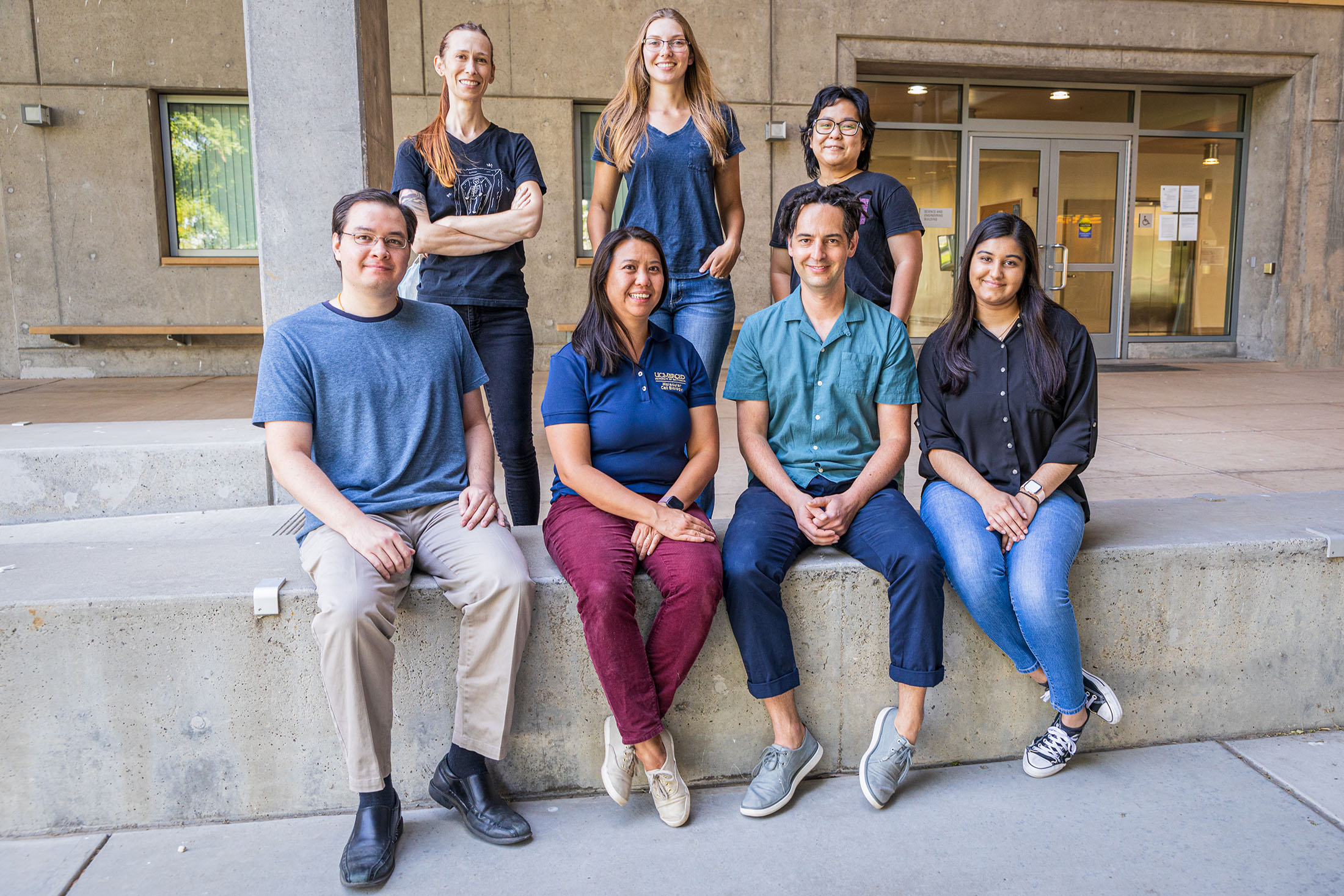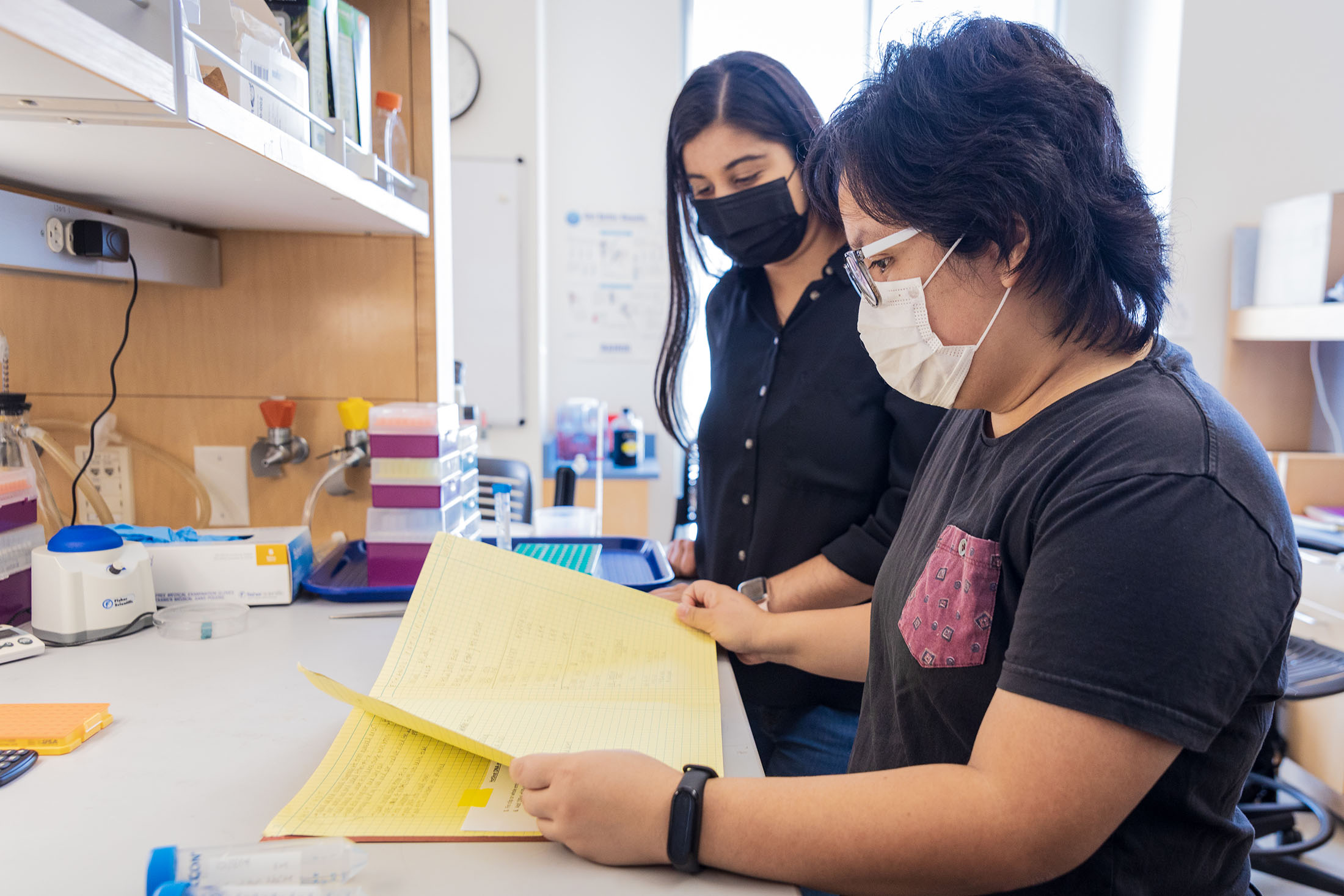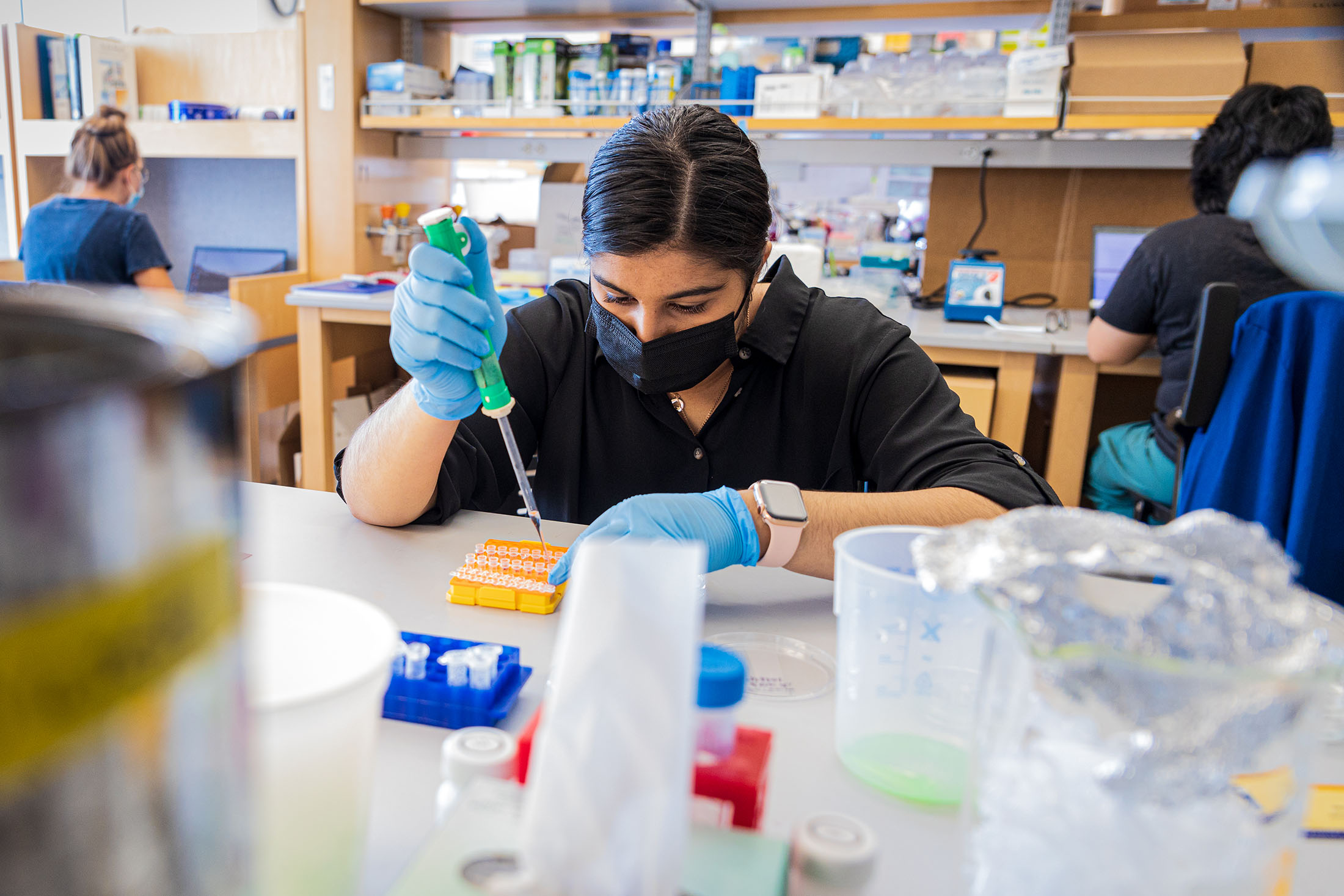We are interested in how dynamic cellular processes such as cell migration and cell adhesion contribute to the formation of the gastrointestinal epithelium, using the zebrafish embryo as our model system.
Optogenetic control of gene expression in zebrafish
One challenge of studying organ morphogenesis is that many cytoskeletal and adhesion-related genes have broad expression patterns, making it technically difficult to restrict perturbation of these genes only to the tissue of interest. We recently developed a light-gated inducible expression system for zebrafish that enables precise, user-defined control of gene expression. This system consists of a blue-light sensitive transcriptional activator called TAEL that activates transcription downstream of the TAEL-responsive C120 promoter. We demonstrated that the TAEL/C120 system can be used with multiple imaging systems to deliver patterned blue light illumination, allowing for precise spatial and temporal regulation of gene expression. We also showed that TAEL/C120 can be used to express Cas9 nuclease to achieve inducible gene editing. Current projects in the lab are aimed at improving the TAEL/C120 system in zebrafish.
Website: https://stephaniewoo.ucmerced.edu/research/







